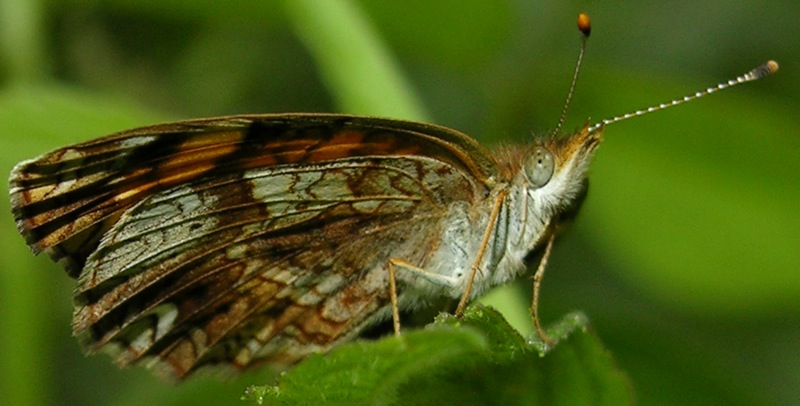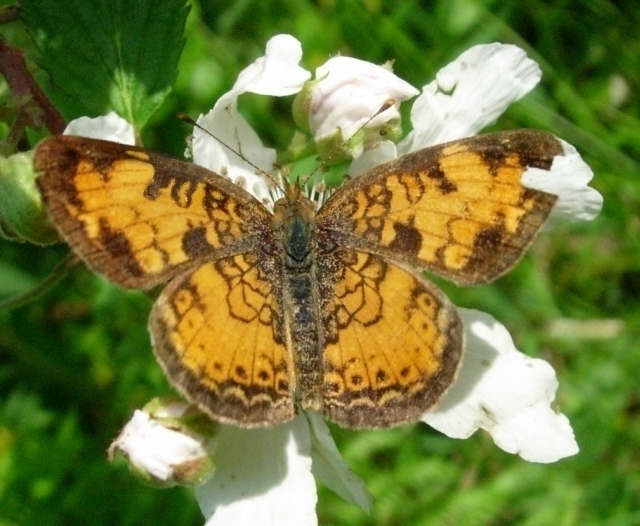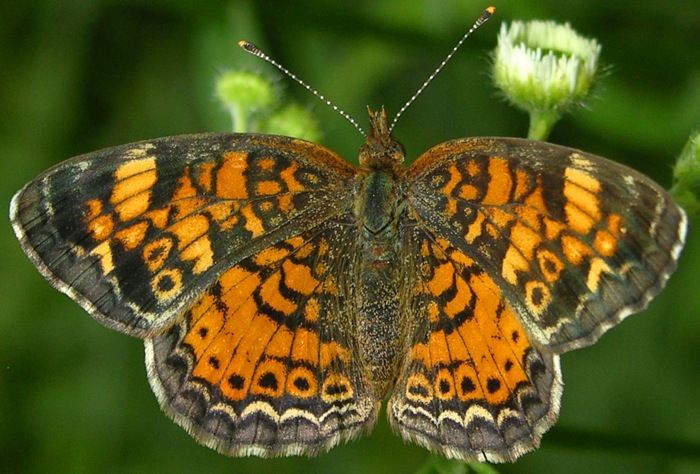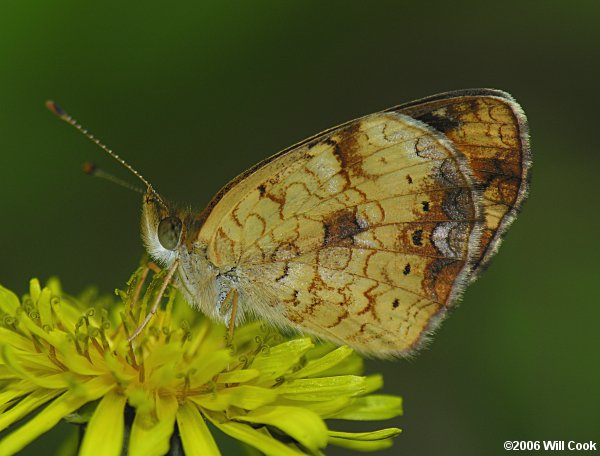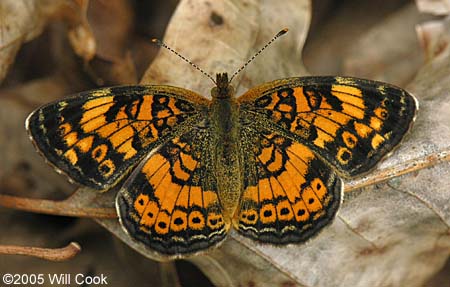|
| Common Name | Incognito Crescent by Will Cook => Clay Co., NC 5/12/06
[View PDF]
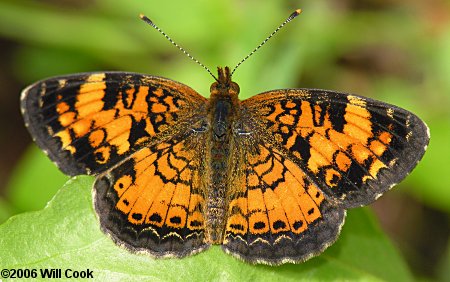 Click to enlarge Click to enlarge
[Google Images] GBIF [Global Distribution ] BoA [Images ] iNaturalist |
| Scientific Name | Phyciodes incognitus
|
| Link to BAMONA species account. |
| Map | Click on a county for list of all database records for the species in that county.
 |
| Distribution | DISTRIBUTION: Apparently limited to the Mountains. Somewhat poorly known; at present, specimens known from Clay, Macon, and Swain counties, plus photographs from several additional counties. As far as known, this species -- now generally considered as a valid split from Northern Crescent (see below) -- occurs at least locally throughout the middle and higher elevations of the NC Mountains, north into the VA Mountains, and south to northern GA. NatureServe Explorer considers this taxon as a subspecies of the Northern Crescent (as P. cocyta incognitus), with a Global Rank of G5T2T4Q; the website editors have listed the Global Rank of this new full species as [G2G4Q].
|
| Abundance | ABUNDANCE: Apparently uncommon to fairly common, but local, in the southern Mountains; however, it appears to be absent in much of the Mountains (Gatrelle 2004), or at least is rare and poorly known in the central and northern NC Mountains. As the species was only described in 2004 (and generally accepted as a good species in 2022-23), and as its appearance is quite similar to other crescents, most butterfliers understandingly have had difficulty identifying it.
|
| Flight | FLIGHT PERIOD: Supposedly two broods: mid-April to late June or early July, and late July through September (Gatrelle 2004). However, the data so far suggest just one main spring brood, and a small second one from about mid-July to at least mid-September. We have but a single September photo that corroborates a flight of the species as occurring in that month, as Gatrelle indicated. Even the status of the second brood is uncertain.
|
| Habitat | HABITAT: Small forest openings, road cuts, and woodland edges, mainly in middle (2500-4000 feet) elevations. The species occurs in dry sites and appears to avoid wetlands, fields, and other cultivated/urban areas.
|
| Plants | FOOD AND NECTAR PLANTS: Foodplants are presumed to be asters (mainly in the genus Symphyotrichum), as other Phycoides crescents use asters; nectar plants are quite varied but are mostly ones along a forest edge or opening.
|
| Comments | COMMENTS: Ron Gatrelle described a new cryptic species (Phyciodes incognitus) in 2004 in The Taxonomic Report. His studies indicated that the widespread Northern Crescent (P. cocyta) does not occur south of WV. He believed that previous specimens and sight reports of that species from VA, NC, and northern GA likely refer to this new crescent, often called as "Mimic Crescent". Pelham (2023), whose checklist the website is following, now considers "Mimic Crescent" to be a good southern Appalachian species (i.e., P. incognitus), split from the very widespread Northern Crescent -- following more recent data from Harry Pavulaan and others. The Butterflies of America website gives P. incognitus the common name of Incognito Crescent.
The principal field marks separating Incognito and Pearl, based on Gatrelle's paper, are: 1) Incognito averages larger in size, often much larger; 2) Incognito generally has orange antennal clubs (at least on the undersides) in both sexes, whereas Pearl males have all black clubs and females have variable (orange to black) clubs; 3) Incognito males have ventral HW lines rust-orange as opposed to often brown lines in Pearl; and 4) Incognito tends to have a more "open" orange pattern on the dorsal HW than does Pearl. Also, 5) female Incognito looks very similar to male Incognito; both are orange and black. Both Pearl and Tawny females have much more black patches above than do males and typically also show buffy patches, as well.
Jeff Pippen, Will Cook, and I studied Incognito Crescents in Clay County in 2005-2006, and Pippen and Cook have put numerous photographs on their websites. We noted that the taxon often flew over 10 feet above the ground, perching well up on leaves of trees along woodland borders. We have never seen Pearl Crescents fly anywhere near this height off the ground nor perching on tree leaves. This flight behavior will need more study at different sites across its range to be sure if this behavior is characteristic of Incognito Crescents.
|
State Rank | S3? | | State Status | W |
Global Rank | [G2G4Q] | | Federal Status | |
| Synonym | Phyciodes cocyta, Phyciodes pascoensis, Phyciodes selenis
|
| Other Name | Northern Crescent, Mimic Crescent
|
|
|

 >>
>>
